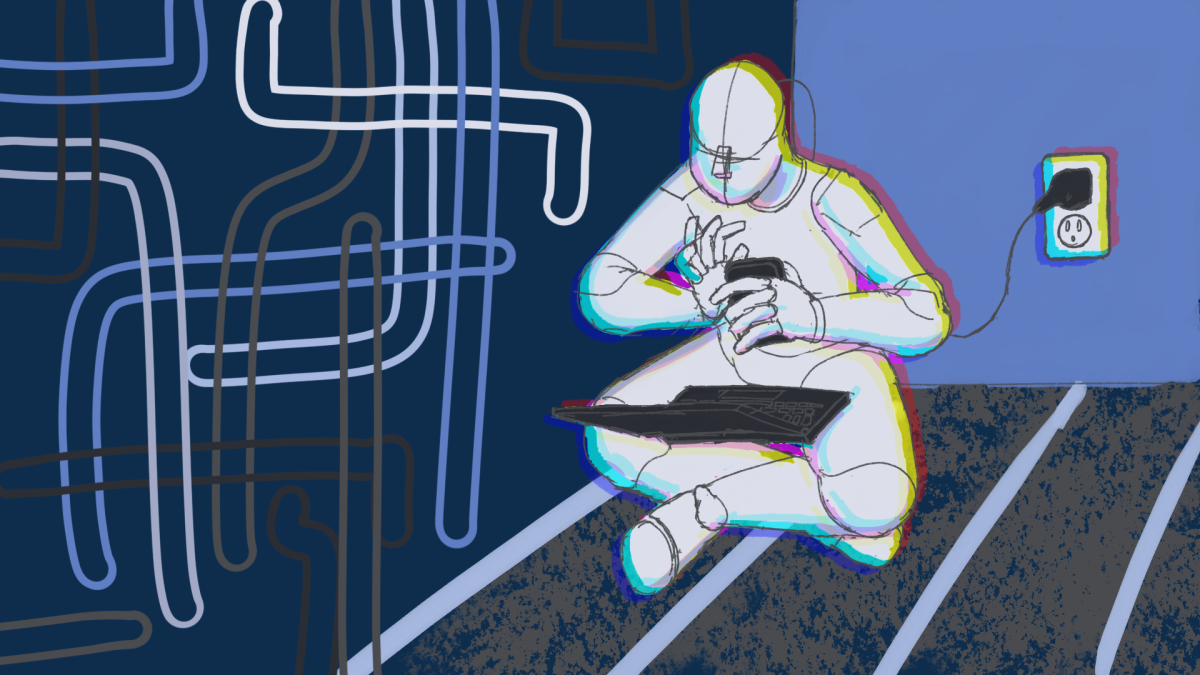College students face many tradeoffs when prioritizing their class workloads, sometimes resulting in less time for physical activity and sleep. However, student lifestyles have also been further altered as higher education has recently underwent a digital revolution.
Both teaching and learning has begun to take a completely new form, one that requires sedentary behavior and a ridiculous amount of screen time.
College campuses worldwide have worked to keep up with technological innovations and increasing demands for Internet access. This increased access in our age of technology has materialized into the pressure that students should always be connected.
According to a study by Baylor University, college students spend an estimated 48.5 minutes sending emails and an average of 94.6 minutes texting per day. The benefits of these quick communication tools come with a cost, the assumption that a delayed response means someone (1) must be ignoring you, because (2) everyone is always connected.
Excessive use of electronic devices leads to a multitude of negative mental and physical health impacts. A study from the University of Illinois found that high usage of mobile technology in college students is linked to depression and anxiety. Other studies show that increased sedentary time is associated with problems in mental health, sleep quality and academic performance in young people.
Upon writing this article, I realized how little current information we have on just how much college students use technology, both academically and personally. The majority of technology-use studies are centered on children and teens.
However, one study notes that technology use per day decreases as students go through college, first-year students spend an average of 10.20 hours, second-years 8.99 hours, third-years 7.97 hours and fourth-years 7.51 hours.
While the majority of class and study materials are online, it is also important to note that a large amount of college students’ leisure time is spent staring at a screen as well. Many college students use more than one social network site, further increasing the amount of time they spend looking at a screen.
Since we rarely are not using electronic devices, our minds never fully have time to wind down. Even before we go to sleep, we are still scrolling through social media and the news. I am not innocent of this either, and I am positive that my hesitance to make my bedroom a technology-free zone is causing me to get much less sleep.
According to an Iowa State University study of 72 students, subjects spent approximately 72 percent of their day sedentary. The conclusions of this study found that these results are likely due to the structure of university life and their digital habits.
The greatest public health problem of the 21st century is physical inactivity. But there are things you can do to reduce the negative impacts of too much screen time, both physically and mentally. Taking breaks to stretch, switching to a standing position, watching your posture, and taking much needed technology breaks are a few easy steps you can take in alleviating some of the stress.
I know I am not alone in sometimes feeling guilty for taking away from study time to go to the gym or spend time outside, but in the long-term these habits will be more beneficial than an additional hour of studying or answering emails.
The human body was not meant to sit hunched over all day staring at a screen, and learning when to disconnect and get some space is an essential part of staying healthy and productive.








